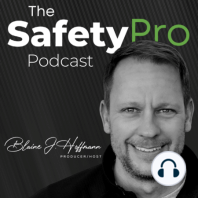5 min listen
033: Lean Safety
ratings:
Length:
35 minutes
Released:
Feb 11, 2018
Format:
Podcast episode
Description
Powered by iReportSource In this episode, I want to talk about Lean manufacturing principles and how it can help you transform safety in your organization. If you listen to this podcast regularly (and I hope you do!), you probably have heard me tell you to look at what tools the lean or quality folks are using in your organization. And there is a good reason for that. They CAN help you improve safety processes. I am going to reference two good books I studies and will draw upon their lessons in this episode. One is called Lean Safety: Transforming your safety program with lean management by Robert B. Hafey and the other is called Safety Performance in a Lean Environment: A guide to building safety into a process by Paul F. English. Lean is a manufacturing philosophy that reduces the total cycle time between taking a customer order and the shipment by eliminating waste. What is excellent about lean principles are they apply to all business processes and especially safety. Also, lean can be used for all types of businesses. Edward Demming is widely considered the father of lean and what became the Toyota Production System (TPS). He went to Japan after WWII to teach Japanese business leaders how to improve quality. His work went unnoticed in the US until the early 1980’s. Of course, that period is important; it’s when Japanese automakers overtook US companies in quality and productivity. Ford first brought Demming in to help improve their quality. This is when Demming determined Ford’s quality systems were not at fault, but instead, their management practices were. A significant cultural change would be needed. So Demming developed 14 points of management. Let’s go through them and see how they relate to safety: 1. Create constancy of purpose for improving products and services. 2. Adopt the new philosophy. 3. Cease dependence on inspection to achieve quality. 4. End the practice of awarding business on price alone; instead, minimize total cost by working with a single supplier. 5. Improve constantly and forever every process for planning, production, and service. 6. Institute training on the job. 7. Adopt and institute leadership. 8. Drive out fear. 9. Break down barriers between staff areas. 10. Eliminate slogans, exhortations, and targets for the workforce. 11. Eliminate numerical quotas for the workforce and numerical goals for management. 12. Remove barriers that rob people of pride of workmanship, and eliminate the annual rating or merit system. 13. Institute a vigorous program of education and self-improvement for everyone. 14. Put everybody in the company to work accomplishing the transformation. It is clear to see how universal these can be. Another useful tool we can take from lean (and trust me, there are many, as I have covered in past episodes) is DMAIC: Define, Measure, Analysis, Improve, and Control. Let’s go through what this might look like for safety. Define: Who is the customer? What is the voice of the customer? What is critical to safety? What is the cost of poor safety? Measure: Cause & Effect fishbone. Is the safety process state and in control? What is the current safety process performance (or capability)? What actions are being taken to protect the employee/company (containment)? Analysis: Which issues are effecting health & safety the most? How many samples do you need to conclude? Improve: What is the ideal solution? What is the proof the solution will work? How many trials are needed? What is the work plan to implement and validate the solution? Control: Can you demonstrate the improvement is sustainable over time? Is the process in control? How do we keep it that way? Again, here is just one example of how lean principles and tools can be applied to safety. Furthermore, this can empower everyone in an organization to champion safety. So safety leadership doesn’t require a business leader or manager. Shop floor workers can get lean training and begin identifying ways to improve the systems they have
Released:
Feb 11, 2018
Format:
Podcast episode
Titles in the series (100)
000: Intro to The SafetyPro Podcast: Workplace Safety Management and OSHA topics for safety professionals, managers and business owners by The Safety Pro Podcast
